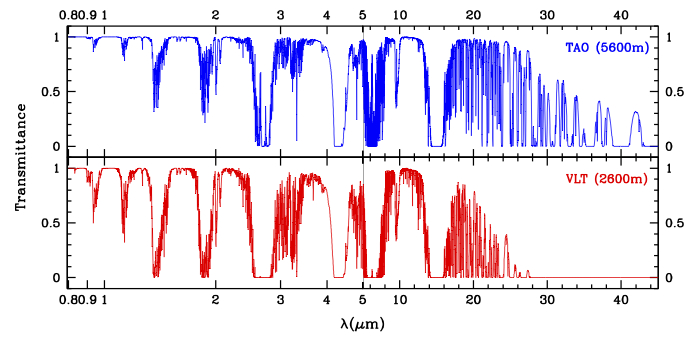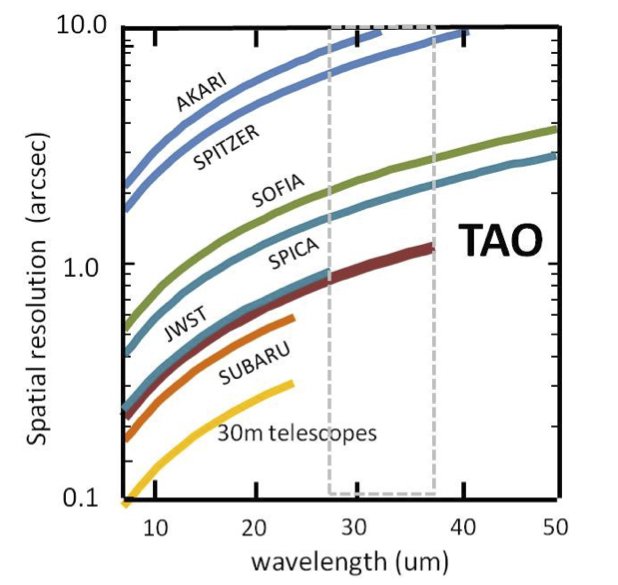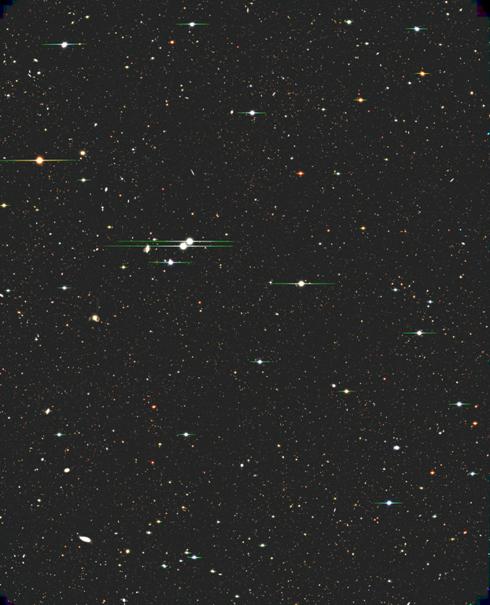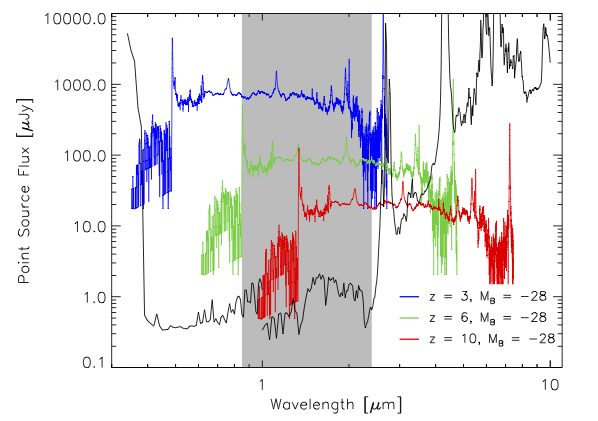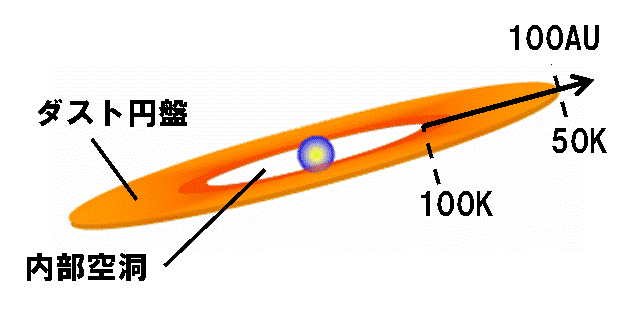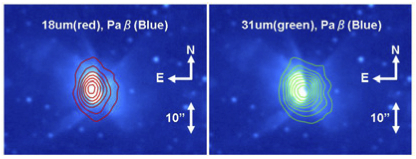
|
TAO Project |
|
The TAO project

|
Science with TAOAdvantages of TAOSince astronomy is the study of various phenomena in the Universe, observations over a wide wavelength range are essential to understand their properties. Infrared astronomy has the second-longest history, after optical astronomy, and has proven very useful for providing new information. However, observations in at infrared wavelengths are not easy because infrared light is strongly absorbed by the earth's atmosphere. The TAO telescope is being built at the world highest site (5640m), where the atmosphere is exceptionally transparent even in the infrared. In the near-infrared wavelength range, discrete atmospheric ügwindowsüh called the J, H, K-bands coalesce into one continuous window at the TAO site. In addition, a new window from 25 to 40 microns appears in the mid infrared. The ability to work at these wavelengths is a unique capability for TAO and one of its strongest advantages. To utilize this excellent observing environment, the TAO telescope has two state-of-the-art instruments called SWIMS and MIMIZUKU. SWIMS (Simultaneous-color Wide-field In- frared Multi-object Spectrograph) is an instrument optimized for near-infrared observations. It has a unique spectroscopic capability covering 0.9-2.5 micron continuously. This is very useful for observations of spectral lines in red-shifted galaxies. Its ability to perform simultaneous observations in two different wavelength bands, as well its wide field-of-view of 9.6üf, enables us to carry out surveys with high efficiency, which is a key for studying galaxy evolution, cosmology, and searching for rare objects. Light at longer mid-infrared wavelengths is observed by the MIMIZUKU (Mid-Infrared Multi-field Imager for gaZing at the UnKnown Universe) instrument. It covers a very wide wavelength range from 2 to 38 microns. The longer mid-infrared region from 26 to 38 microns is accessible only to TAO/MIMIZUKU. Thanks to its higher spatial resolution, compared to satellite telescopes in this wavelength range, MIMIZUKU is a very powerful tool for studying planet formation and the origin of materials. Furthermore, MIMIZUKU has a unique function of simultaneous observations of two discrete fields of view, which enables us to carry out accurate monitoring in the mid-infrared.
Science Cases with TAOThere are many scientific projects available to the TAO telescope. The most important two are ügOrigin of Galaxies and the Universeüh and ügOrigin of Planets and Materialsüh. ügOrigin of Galaxies and the Universeüh
When were galaxies born? How did they form their current structure? To answer
these questions it is essential to understand the growth process of
stellar populations throughout the evolutional history of a galaxy.
A wide and deep survey of
galaxies in near-infrared wavelengths is key to reveal this
process statistically and to investigate the environmental effects on their
evolution. ügOrigin of Planets and Materialsüh
Recently, a lot of planets outside the Solar system (so called exoplanets)
have been
detected and studied intensively by many astronomers. The total number of the
detected planets has reached over 3400 at the time writing in April 2017.
Investigations of the details of the exoplanets,
including their orbits, sizes, compositions, and
atmospheres, are key for understanding the formation of
(exo)planets and the (eventual) beginning
of life. These planets are thought to be formed in dust disks around
young stars, which are called pre-main-sequence stars.
The dust disks, therefore, as well as the exoplanets themselves, are
important targets for observation.
The dust disks do not shine at optical wavelengths, but are very
bright in the mid-infrared.
The capability of 30-micron imaging by TAO is
expected to reveal details of the formation process of planets
for the first time.
Copyright(c) 2007-2015 TAO Project, Institute of Astronomy, Graduate School of Science, University of Tokyo
|
